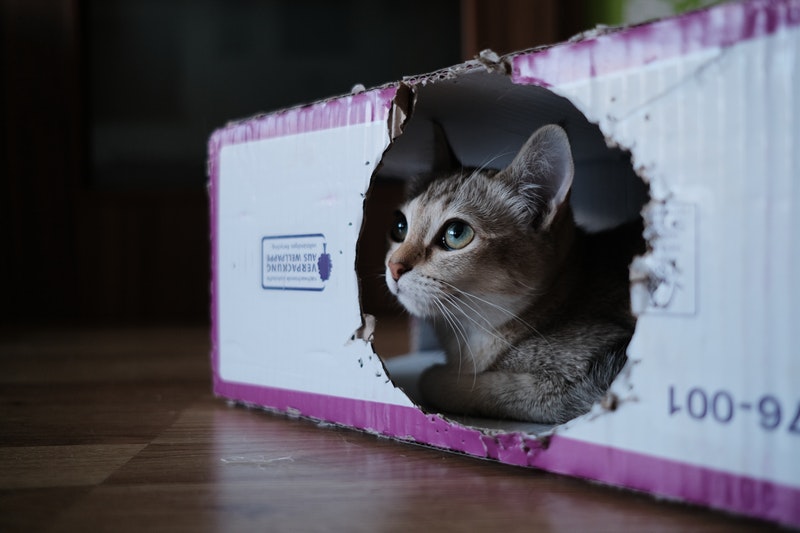Moving can be stressful. There’s a lot to arrange, a lot to do, and a lot of uncertainty. Will everything make it there in one piece? Will everything fit? As stressful as this move can be for you, it’s even more stressful for a pet.
Our pets don’t understand what’s going on around them like we do. All they see is everything being put into boxes and moving out of the house. This can be extremely difficult for some pets to deal with. A turtle might not care where the aquarium goes, but a dog or a cat can have pretty strong opinions on the move.
This should be taken into account. But how do we make the move easier on our pets? Here are some tips.
1. Bring the Boxes In Early
Many animals are uncomfortable with change. They are also quite observant. Dogs and cats frequently recognize when something is going on. Whether you’re packing up your house or simply packing a suitcase to go on vacation, our animals can tell something is about to change. They become anxious as we start taking clothes out of the closet and putting them in a bag. This can take many forms; anything from climbing into your bag or suitcase to keep you from putting more inside, or maybe even having an accident inside the house.
You can bring your boxes into the house a little early to combat this anxiety. Give you and your pet enough time to acclimate to the boxes before you start to pack them. This lessens the shock for them.
2. Plan the Road Trip
For long distance moves, put some thought into where you are going to stay. There are plenty of pet-friendly hotels. Set up a route and research where these options are located before leaving.
It’s also a good idea to keep in mind the fact that you won’t be able to drive for long stretches like you could without an animal in the car. Frequent breaks will be required in order to let your pet relieve themselves. The lost time on the road is easily outweighed by avoiding the clean-up needed if an animal has an accident in the car.
3. Move Your Stuff First
If possible, move your belongings into the house before your pet. You don’t want to introduce them into their new home, only for them to find it empty, uncomfortable, and scary. If the weather permits, leave them in the car. Ideally, you could have someone sit with the animal to keep them company while the move is happening. Keep them secure, occupied, and as comfortable as possible. And then introduce the new place once everything is inside. There will be familiar scents and sights. This will ease them into the new place instead of magnifying their anxiety.
4. Allow Time to Settle In
It’s going to take some time for your pet to become comfortable in their new home. You can help this process by paying attention to them and assuring them that everything is going to be okay. It might be tempting to unpack everything as quickly as possible, but continuing the changes can stress your animals out even more. Sit with them. Talk to them. Abrupt changes only increase discomfort, so ease them into their new home by allowing enough time for them to settle down.
5. Transfer Vet Records
You don’t want to completely reintroduce your pet to their new vet. Medical records can be brought along or even faxed over to the new office (if you have one in mind). These considerations can easily slip through the cracks. And then you’ll find yourself in need of medical assistance and your vet won’t have the requisite knowledge to help your pet as well as they otherwise could. So prepare for this by bringing a hardcopy of your pet’s records with you or have them transferred to a new office by the time you arrive.
6. Set Up a Routine
The initial introduction to the new home is important. This stage acclimates the animal to their surroundings and sets the framework for their new life. A routine is what is built around that framework. Getting your pet on a schedule of feeding, going outside, and sleeping is essential to getting them to be fully comfortable in their new surroundings. Each animal will adjust to their new surroundings at different rates. Giving them the tools to do so will help to speed this process along.

